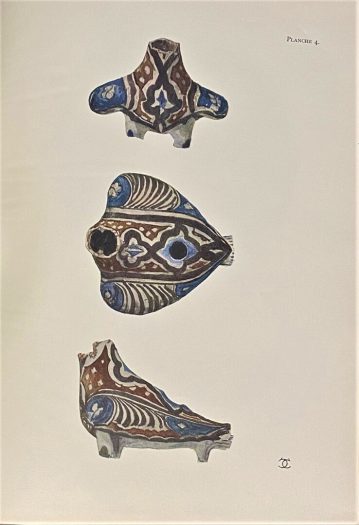Hama: Fouilles et Recherches 1931-1938 IV 2. Les Verreries et Poteries Médiévales.
Riis, P. J. & Vagn Poulsen.
Synopsis
In 1930 the young Danish archaeologist, Harald Ingholt, travelled to the town of Hama, on the Orontes River in Western Syria, in order to dig some test trenches on the mound. Since these trenches proved promising, Ingholt was allowed to conduct full-scale excavations in the years from 1931 to 1938, with the support of the Carlsberg Foundation.
Although archaeologists had been working in Syria for some time already, it may be said that the Danish excavations at Hama played an especially important role in illuminating the history of the western part of the country, most significantly in the earlier periods. The objects from the excavation that were shipped to Denmark also came to play an important role in the collection of the Antiquities Department in the National Museum.
Poul Jørgen Riis (1910 – 2008) was a Danish classical archaeologist and Etruscologist. In 1932-1933 and again in 1936-1937 Riis took part in the expedition of the Carlsberg Foundation in Hama, Syria. From 1948 he presented the results, partly alone and partly together with his wife, the archaeologist Marie-Louise Buhl, in the volumes of the Hama – Fouilles et Recherches de la Fondation Carlsberg 1931-1938. From 1958 to 1963 he directed the archaeological investigations of the Carlsberg Foundation, of which he was a member of the board from 1957 to 1962, of the Phoenician Tell Sukas.






